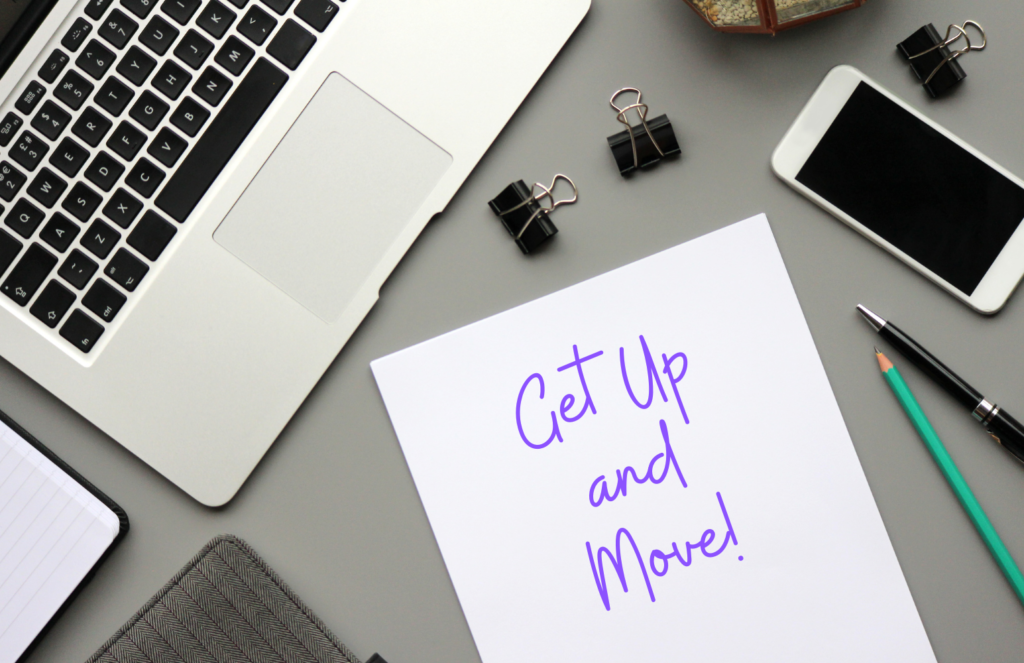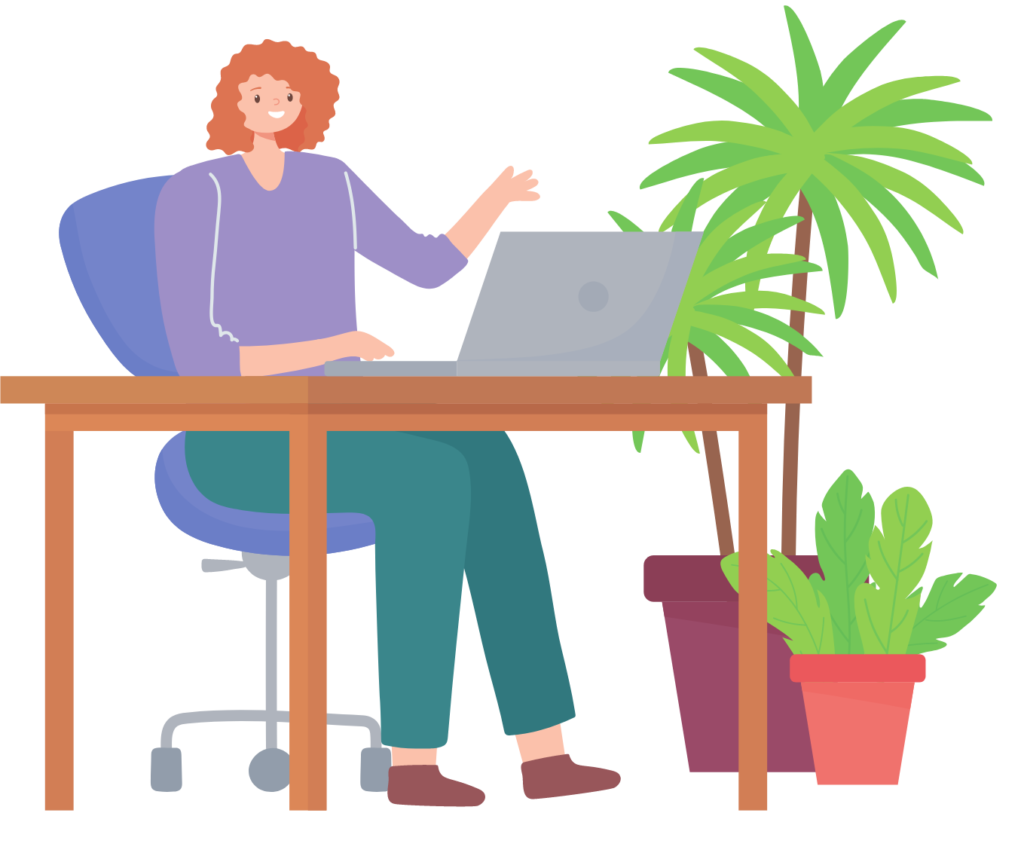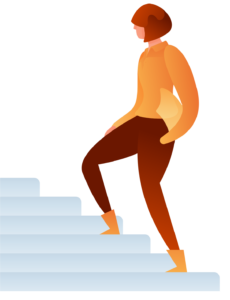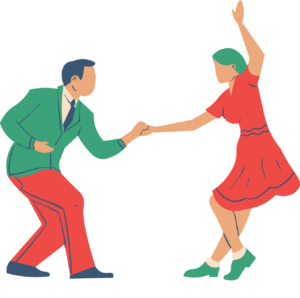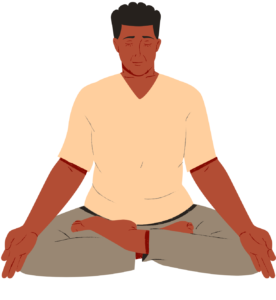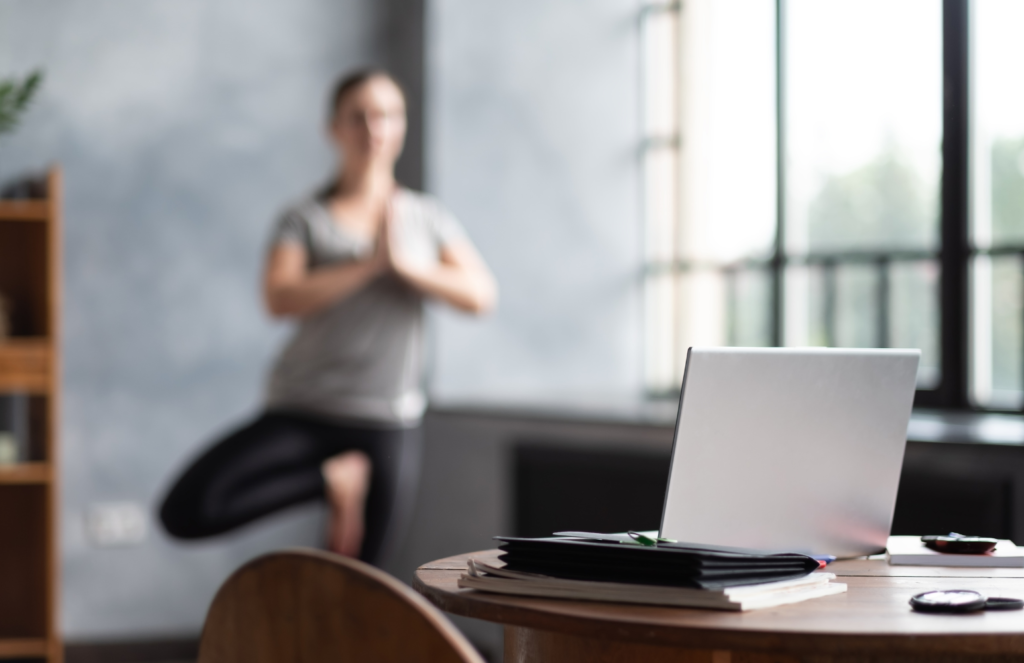Get Up and Move!
Do you find yourself sitting in front of your computer for so long that when you finally take notice you are stiff or sore?
We need to make movement intentional and important. Habits are powerful behavioural practices.
Consider teeth brushing. We decide it’s important and we incorporate the activity into our daily routine. We don’t question it; we realize the benefit of clean teeth and we make the time to do this daily activity, we make it a habit.
Unfortunately, we don’t always make the time and space for movement. For many of us it doesn’t make the top of the priority list. We are just “too busy.”
If you are that person that stays in one position too long, disrupt yourself. Make a plan to incorporate movement, that is good for body, mind and spirit.
How do you create disruption?
Try setting a phone timer to remind you that it’s time to move. Use the Microsoft Viva App to schedule time each day for self-care; some time to move, stretch, and reduce the strain.
Here are a few more ideas to help us move and add variety:
- Schedule the time in your Outlook calendar so you get up and move each hour.
- Take the first, or last five minutes of team meetings for everyone to move, to stretch.
- Put weights, resistance bands, or other equipment “in your way.” The visual reminder triggers you to keep to your plan to build strength a few minutes at a time.
- When you take a bio break, add some steps by taking a couple extra trips up and down the stairs, up and down the office hallway, around your home, the office building or the truck.
- If you usually sit at work stand up during calls, if you are able.
- If you usually stand while working, when you are on break, sit down.
Why is it Important to Move During the Day?
If you work from home, you may not have the need to go outside. In fact, it may only be a few short steps to and from the “office.” It’s easy to become sedentary. As the season changes with shorter days and colder weather it’s way too easy to make excuses for staying inside and not exercising. But we need to move because a sedentary lifestyle can:
- Double the risk of cardiovascular diseases, diabetes and obesity;
- Increase the risk of colon cancer, high blood pressure, osteoporosis, depression and anxiety.
It’s even been reported that being too inactive can be as bad for your health as smoking!
The Canadian Society for Exercise Physiology recommends adults get at least 150 minutes (about 2 and a half hours) of exercise per week with each session lasting at least 10 minutes.
How to get going?
Go outside for a walk at least once a day. The fresh air benefits are invigorating!
Schedule the time so you make it a priority, just like a do for a recurring meeting. If you can’t set aside an hour, try to fit in at least 2 15-minute walks each day, depending on your fitness level and physician advice.
Think creatively. If your job allows, try walking meetings, either by yourself or with colleagues.
Make it a family activity, a time to unwind, a time to connect and debrief the day.
Can’t get outside, try these ideas:
Check out ParticipACTION
Check out the ParticipACTION site for a variety of workout videos including, “Break from Busy” and “Get Fit as You Sit.”
Check out ParticipACTION
Check out the ParticipACTION site for a variety of workout videos including, “Break from Busy” and “Get Fit as You Sit.”
 The majority of Canadians will experience lower back pain at some point in their life. Statistics Canada reports that back pain is among the top causes of chronic pain in Canadians ages 12 to 44.
The majority of Canadians will experience lower back pain at some point in their life. Statistics Canada reports that back pain is among the top causes of chronic pain in Canadians ages 12 to 44.
This doesn’t mean that back pain has to be inevitable. Simple things like being mindful of your posture can help relieve or prevent lower back pain.
Sitting up perfectly straight all the time isn’t necessary, in fact it’s not a good idea as it can strain the muscles. It can be relieving to sit in different positions to reduce strain.
There are a few simple things that we can do to help limit strain including:
- Avoid working in bed or on the couch so you aren’t slouching.
- Keep your monitor at eye level and roughly an arm’s length away.
- Increase the font size on your computer to reduce the need to poke your head forward.
- Set your chair at a height that keeps your knees bent at a 90-degree angle.
- Place books or a stool under your feet if they don’t reach the ground with bent knees.
- Practice posture-friendly exercises.
- To see some exercises that help prevent or reduce back pain check out the information from our benefit provider, Sun Life and Lumino Health. Exercises for lower back pain | Sun Life Lumino Health
 In the Sunlife article, 6 chair exercises you can do at your desk to reduce tension (sunlife.ca) Dr. Lyons reminds us that moving throughout the day is good for our bodies. “Staying in one place for too long will cause pain and tension over time. Desk exercises are simple to do, and stretching helps reduce tension.”
In the Sunlife article, 6 chair exercises you can do at your desk to reduce tension (sunlife.ca) Dr. Lyons reminds us that moving throughout the day is good for our bodies. “Staying in one place for too long will cause pain and tension over time. Desk exercises are simple to do, and stretching helps reduce tension.”
Dr. Lyons emphasizes that all exercises and stretches should be done within your pain-free range of motion. Check out the article for more information on how to perform these six stretches that can be done at our desks.
- Neck rolls
- Shoulder rolls into chest opener
- Calf raises
- Hamstring stretch
- Knee to chest
- Figure 4
Tip: Change the position of your chair, if you can, or change chairs to vary your position and reduce the stress on the same body tissues.
 The reality is that some occupations make it harder to build in time to move, or even change positions. Driving is one of these occupations. But there are some things that drivers can do. (First, remember to get the advice of a health care professional.)
The reality is that some occupations make it harder to build in time to move, or even change positions. Driving is one of these occupations. But there are some things that drivers can do. (First, remember to get the advice of a health care professional.)
- Adjust the seat to achieve the best posture support. Set a position where your knees are higher than your hips. Use a small pillow or lumbar device to support the small of your back.
- Pay attention to your posture. Use your mirrors to check to ensure your head is straight, your shoulders are level, and you have equal space between your arms and your sides. Don't sit on a wallet, or anything else that affects your body’s balance.
- If possible and when it’s safe to do so, make small adjustments to the seat from time to time if driving for long periods. Any position can become uncomfortable if kept for a long period of time.
- Gently move your arms, legs and neck, if you are stopped.
- When stopped, carefully do some neck stretches. Keeping your head centered over your shoulders with your chin directly above your breastbone, extend your head toward the ceiling, while holding your chin parallel to the floor and not lifting it.
- When stopped, practice abdominal breathing. Rest your hand below your belly button; breathe in until you feel your belly expand. Hold for a few seconds. Exhale until your belly is relaxed.
- If you are able, walk around your truck two or three times and then practice some stretching. The walk will help warm up your muscles for the stretch. In the article (Back behind the wheel: Stretch just for the health of it - Truck News it is recommended that each stretch is held for 20 seconds. Remember that when you are doing these stretches, each movement is slow and controlled. No bouncing because it may lead to injury.
- After driving, stretch your mid-back. Lift the bottom of your ribcage an inch or two, pulling your shoulder blades back and down. Practice holding this position for 10-minute intervals.
- If possible, when you leave the truck, try a few fender squats to loosen your spine. Check out the article in Truck News for advice on how to safely do a fender squat. (Maintaining proper alignment - Truck News)
Conclusion
Disrupt yourself, add reminders to your daily routines in whatever way works for you. The goal is to create new habits and build a plan that incorporates movement into each day.
There are many tools that can help build your plan. Try the Microsoft Viva App; it arrives in your inbox every day so why not make use of it?
Check out the ParticipACTION site for tips, ideas and resources to help you get moving more often.
Of course, with any health plan make sure you follow the advice of a health care professional for what is best for you.
Get up and move, check your posture and see the health benefits that come from creating new habits!

